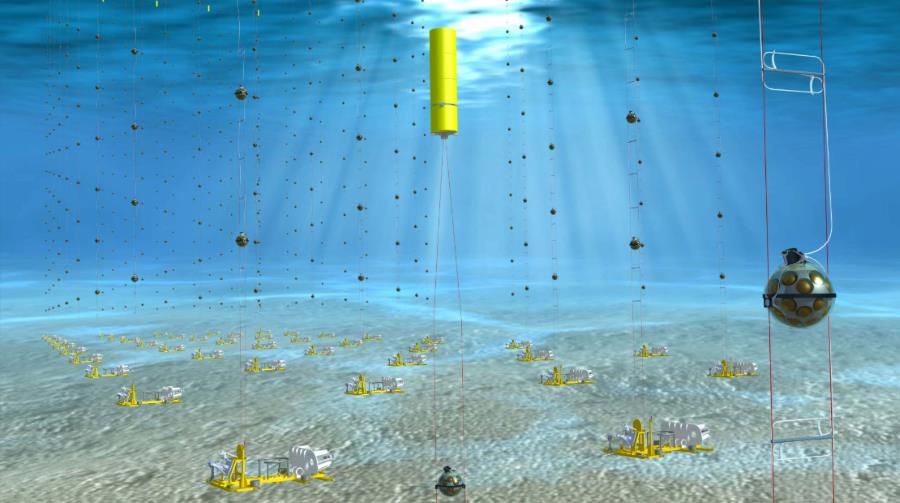
Telescope at the bottom of the sea
Work is underway at the bottom of the Mediterranean Sea to build a huge next-generation telescope. With this instrument, however, scientists won’t be looking at the stars. Telescope to help explain some of the most powerful and mysterious events in the Universe.
The project is called KM3NeT (Cubic Kilometre Neutrino Telescope) and is an international effort. This underwater neutrino telescope, ktory will be looking for the signal of neutrinos – tiny elementary particles thatore very weakly interact with matter. These particles have the incredible ability to penetrate. Although a planet such as Earth is almost no obstacle for them. Scientists estimate that through one square centimeter of our planet’s surface zwrocone towards the Sun every second flies by 65 billionoin the neutrino.
Given the properties of neutrinos, it is extremely difficult to detect them. But there are ways around this too. The particles are captured in huge pools deep below the surface, filled with water or other substances. Researchers need to build increasingly sophisticated observatories to better understand these elementary particles. KM3NeT is expected to be one of them.
– Neutrinos very rarely interact, but when this particle strikes water, it generates light, ktore KM3NeT telescope will be able to detect – said Dr. Clancy James of the Curtin Institute of Radio Astronomy and the International Center for Radio Astronomy Research (ICRAR) in Australia.
KM3NeT is currently under construction in dwolocations with a potential expansion to a third pending funding. Locations of detectors under constructionow are found at depths of up to 3,500 metersow. One is off the coast of the French Riviera and will be the mainownly study neutrinos „local”. The second detector lies off the coast of Sicily and will look at high-energy neutrinos, whichore come from explosionsoin supernovae, flaresoin gamma or neutron star mergers.
– This project will help us answer key questions about particle physics and the nature of our Universe, potentially ushering in a new era in neutrino astronomy, acknowledged Dr. James.
The first phase of the telescope’s construction involves placing 30 detector units on the seabed. Each is a rope anchored to the bottom, on ktorej is located the 18th detectorow. In the darkness of the deep sea, detectors can record flashes of light produced by neutrinos interacting with seawater. Detection units have been installed at both locations, whichore already collecting data. A total of 115 such units are to be installed.
– Each rope has 18 modulesoIn equipped with light detectors along its length. In the dark, these sensors register faint flashes thatore signal neutrino interactions with seawater, said Dr. James.
But KM3NeT is not the only neutrino telescope in the world. A similar one is located in Antarctica, but it uses a frozen l to detect neutrinosod instead of seawater. This detector, conducted by 49 scientific institutions from 12 countriesow. Using thousands of photomultipliers to monitor a cubic kilometer of ice located almost poone and a half kilometers below the surface. Photomultipliers track subtle flashes of light, initiated by the interaction of particles forming lod with neutrinos. IceCube captures several hundred neutrinos a day.
KM3NeT will also help in the search for dark matter, but not only. The research infrastructure will roalso include instrumentation for other sciences, such as marine biology, oceanography and geophysics.


